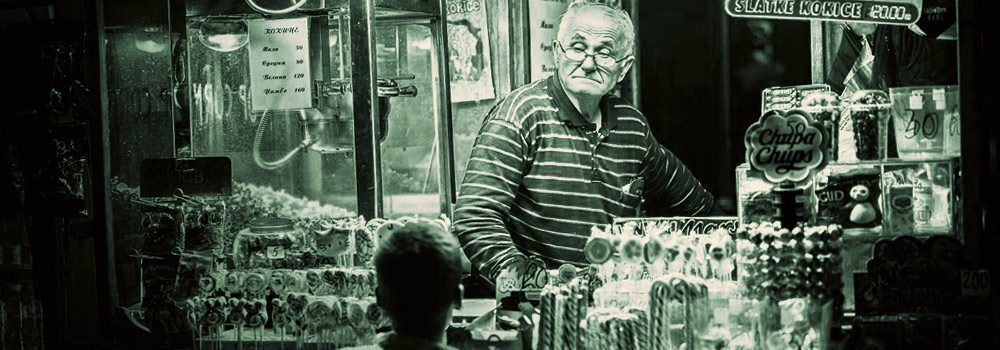Defining your product or service means defining the market, or the audience, that your business idea is designed to address.
At least, that’s the way it should be done. In reality many businesses first develop a product and looks for a market for it afterwards. But that’s the topic for another day.
Most business owners believe their market is vast. That they only need to take an itty-bitty slice of an already-established audience in order for their business to succeed. “Everyone buys soap powder! The market already exists and is worth billions! We only need to convince 0.5% of the people who already buy X to buy our stuff and we’ll be rich!” You know the sort of thing.
In reality such thinking is delusional, misguided…if not downright lazy. If only things were so simple.
Sure, there’s a certain logic in targeting large markets. A large market means that there’s an already-determined, commercially-validated demand for whatever product or service you’re selling. Furthermore prospective customers already understand the product category, since they’re already buying – even if it’s currently from someone else. But at least you don’t have to spend time and money educating your audience to the problem that your business is solving. Surely the market’s big enough for everyone, in order for you to steal 0.5% of it for yourself, right?
If The Market Sees You As The Same, Then You’re No Different
The problem with going after big markets is that there are big players already in them. If you’re in the laundry soap powder business and going after the big market, that means you’re competing against behemoths such as Proctor & Gamble or Unilever – who also just happen to be among the largest global advertisers on the planet. What would you have to do to convince this mythical 0.5% of soap powder buyers to switch to your brand?
Clearly you can’t compete head-on. So you need to differentiate your product in a way that your audience appreciates it enough to vote – with their Dollar, or Pound, or Euro, or whatever.
Maybe your washing powder is more eco-friendly. Maybe it comes in sustainable packaging, is made of all-natural ingredients, or is hypoallergenic. Whatever your hook, it needs to be seen by your audience as being clearly different from Tide, or Persil, or Ariel, or whatever, in order to have a chance of success.
The thing is, there can only ever be a subsection of buyers who’d appreciate the difference between your soap powder and the the brand they currently buy. Sure, it’s a subsection of a ‘big market’, but it’s a subsection nonetheless.
All of a sudden your market isn’t a big as you thought it was.
The Test Of The Existence Of A Big Market
The legitimate existence of a big market can be pretty easily determined – you ask your target audience.
If you can go to a sizable cross-section of your target audience, ask them “which brand of X do you use?” and they can give you a direct answer, then you probably have a decent-sized market. If you ask 100 people what kind of breakfast cereal they buy, you’ll probably get 100 direct answers. Even if a few respondents answer “I don’t eat breakfast cereal”, everyone probably knows what you’re on about. The product category is familiar enough for them to give a direct reply.
However if you ask 100 people what kind of hypoallergenic, sustainably-packaged washing powder they use, there’s a good chance that a significant number may answer “Say what?”
Clearly that doesn’t mean that your product doesn’t have a chance. However it probably does mean that market space where you’re playing is much smaller than originally envisaged, and (quite probably) that a certain amount of buyer education is required.
Ultimately you want to get to the point where your audience knows the category description without having to be told the functional description. To the point where you don’t have to say “a passenger vehicle designed to carry passengers in a traditional front and back seat configuration, as well as provide additional cargo capacity in the form of a two-box design with shared passenger/cargo volume with rear cargo access via a liftgate.” when they already understand the term SUV.
A Market Is Determined By Customers, Not By Brands
The definition, scope, and size of a market can only be based upon current buyer understanding on what that market represents. Customers need to understand what your product is and how it compared to other products. If not, regardless of your perception of “size”, the truth is that you’re in a new market. That implies a different set of strategies and tactics regarding audience education and the introduction of your product.
Once you start figuring out who and where you are, the rest becomes a whole lot easier.

